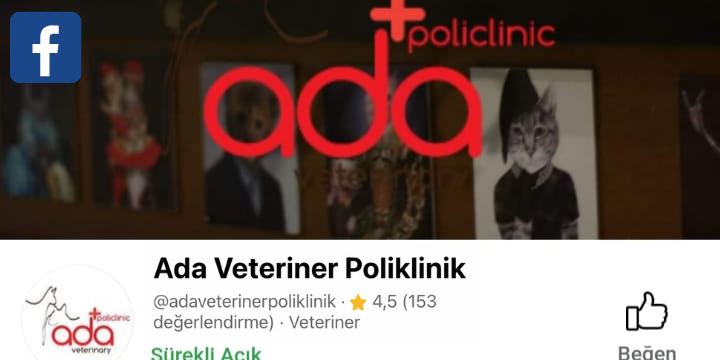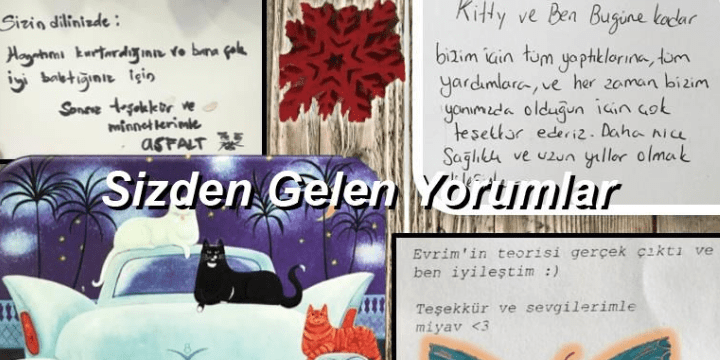Unlicensed GS-441524-Like Antiviral Therapy Can Be Effective For Fip
Hamilton Region Veterinary Emergency Clinic, Hamilton, ON L8P 4W3, Canada; [email protected]
sourced antiviral GS-441524-like therapy for cats suspected to have feline infectious peritonitis (FIP), a previously fatal disease. Members of a large social media support and GS-441524-like drug distribution group were surveyed via the Internet. The survey was targeted toward owners who had treated their cats for at least 12 weeks with unlicensed GS-441524-like drugs. Of the 393 analyzed surveys which met inclusion criteria, 73.7% of owners utilizing this therapy were from the United States. Only 8.7% of owners reported receiving help from their veterinarian in administering the treatment to their cat. The mean cost of treatment was USD 4920. A majority of owners (88.2%) reported noticeable improvement in clinical signs within one week of initiating therapy. At the time of the survey, 96.7% (380 cats) were alive, with 54.0% of them considered cured and another 43.3% being monitored in the 12-week observation period. A total of 12.7% of the cats suffered a relapse of clinical signs of FIP, and 3.3% of the cats died despite GS-441524-like therapy. Reported complications were mostly related to owner administration of subcutaneous injections of the acidic GS-441525-like therapy, such as vocalization, pain, struggling, and injection-site wounds. Limitations of this study i
nclude a retrospective design, bias in case selection, reliance on owner-reported data, and inability to confirm the contents of unlicensed pharmaceuticals; however, important lessons can be learned from the experiences of these owners. While unconventional, and certainly not free from medical and legal risks, unlicensed, at-home GS 441524-like therapy, according to owner reports, can apparently offer benefits in the treatment of cats suspected of FIP.1. Introduction
Since March of 2020, the spread of the coronavirus known as SARS-CoV2 has devel- oped into the global COVID-19 pandemic. A related, but feline-specific, virus known as feline coronavirus (FCoV) is the causative agent of a fatal disease of cats known as feline infectious peritonitis (FIP). Antiviral drugs that inhibit viral RNA replication have offered potential therapeutic and preventative benefits for COVID-19, including the adenosine nucleoside monophosphate prodrug GS-5734, more commonly known as remdesivir (mar- keted by Gilead Sciences, Inc. (Foster City, CA, USA)) [1]. A 2018 study published by Murphy et al. demonstrated that GS-441524, a less chemically complex parent nucleoside (also patented by Gilead), was highly effective against experimentally induced FIP at a dosage of 4.0 mg/kg subcutaneously every 24 h for 12 weeks (84 days) in 10 labora- tory cats [2]. Later in 2019, the same group conducted a clinical trial using GS-441524 to treat 31 client-owned cats with FIP, and the results indicated that this once fatal dis- ease was clinically reversible with this nucleoside analog [3]. The compound name for GS-441524 is (2R,3R,4S,5R)-2-(4-Aminopyrrolo[2,1-f][1,2,4]triazin-7-yl)-3,4-dihydroxy-5- (hydroxymethyl)tetrahydrofuran-2-carbonitrile, which has been known by a variety of other synonyms [4]. For brevity in this report, we refer to multiple unlicensed drug formu- lations which claim to contain this compound as ‘GS-441524-like’, even though they were not produced by Gilead Sciences.
FCoV (feline coronavirus) is an extremely common virus, to the point of being consid- ered ubiquitous worldwide [5], with seroprevalence of between 26 and 87% (depending on the study and the region of the world) in cats originating from multi-cat environments (catteries or breeders and animal shelters) [6]. Active infections with FCoV cause mild to subclinical transient GI infections in most patients [7,8]. While 70% of these cats are transiently infected with FCoV, 13% remain persistently infected and chronically shed the virus in their feces [9]. FIP arises from a mutated form of FCoV in approximately 5% of these cats [8] and kills an estimated 0.3 to 1.4% of cats worldwide annually [3]. The two major clinical presentations of FIP include an effusive (“wet”) form, in which the patient exhibits cavity effusions, and a non-effusive (“dry”) form. Until very recently, the development of FIP in cats was uniformly fatal and often challenging to accurately diagnose antemortem [10].
Possibly due to the desire to continue to explore human RNA viruses that might be inhibited by GS-441524, Gilead halted further drug development of GS-441524 therapy in cats. This created a demand for GS-441524 from cat owners whose cats were diagnosed with FIP and facing a certain death. As a result, multiple unlicensed (sometimes referred to as “black market”) drug manufacturers began selling this compound to cat owners over the Internet, which is not currently authorized under the United States patent by Gilead Sciences [4]. The evolution continued into a large-scale, crowd-sourced, online FIP treatment and support network, the likes of which have never before been encountered in veterinary medicine. There are now several large social network groups that help cat owners obtain GS-441524-like drugs, plan a protocol, and treat their cats with suspected FIP. As GS-441524 remains an unlicensed therapy in the United States and elsewhere, the majority of this drug is produced, purchased, administered, and monitored without much, if any, veterinary oversight.
The goal of this study was to formally evaluate the administration of this unlicensed, crowd-sourced therapy for FIP and determine what factors may lead to treatment success. To do this, we surveyed members of the largest of the aforementioned social media support and GS-441524-like drug distribution groups. What we discovered was truly astounding; not only are lay people routinely attempting this therapy on their cats, but it is consis- tently effective in achieving a cure according to owner-reported data. Additional patient, treatment, and outcome characteristics are analyzed in this report.
2. Materials and Methods
A survey (included as supplementary data) was created through Google Forms (docs.google.com/forms). The survey was circulated widely on a prominent social media page (“FIP Warriors”) dedicated to GS-441524-like treatment and distribution. It was ad- vertised and targeted toward owners whose cats were suspected to have FIP (based on variable criteria used by their individual veterinarians) and had received at least some amount of treatment with GS-441524. Some of these patients had received the full 84 days of treatment, while others had begun the treatment protocol and subsequently died of the disease or were euthanized due to complications. Inclusion criteria were survey submis- sions regarding any cat that had undergone GS-441524-like treatment for suspected FIP and had completed at least 84 days of treatment (regardless of the outcome thereafter) or that had begun treatment and subsequently died. Exclusion criteria were survey submissions regarding patients that had undergone <84 days of therapy (due to being mid-treatment protocol) or that were missing a majority of data from unanswered survey questions.
The survey took cat owners approximately thirty minutes to complete, and questions consisted of both multiple choice and short answer format. Some questions appeared based on previous answers, in a hierarchical arrangement, as owners worked their way through the survey. Permission to share and circulate the survey was obtained from the social media group’s administrators, and it was frequently shared and posted on all affiliated pages. Survey data were collected between 31 July 2020 and 25 October 2020. The study was approved by the Ohio State University’s Institutional Review Board (protocol #2021E0162).
All data were entered into Minitab version 19 (State College, PA, USA) for analysis. Descriptives and frequencies for all categorical variables were computed. Basic descriptive statistics were calculated for all continuous variables. Two-sample t-tests or one-way ANOVAs were used to compare differences between groups, with alpha set at 0.05 and 80% power.
3. Results
3.1. Owner/Patient Characteristics
A total of 411 surveys were collected during the study period, with 393 cases meeting inclusion criteria and having a known status (alive vs. deceased). The remaining 18 surveys were not complete enough to obtain a sufficient amount of information. Of those 393 cases, 64.9% were male (52.3% neutered males and 12.6% intact males) and 35.1% were female (25.9% spayed females and 9.2% intact females).
The majority of owners were from the United States (73.7%), with the next highest number coming from Canada (6.6%) (Table 1). The mean age at diagnosis was 1.65 years (approximately 1 year and 8 months) with a standard deviation of 2.28 years and a range of 2 months to 18 years. More than two thirds of the cats (67.2%) were reported to be multiple breeds, domestic longhairs, or domestic shorthairs. The remaining 32.8% were a wide variety of pure breeds, with the most common breed reported as Siamese (5.6% of all cats) (Table 2). This supports a 2006 sixteen-year retrospective study by Pesteanu-Somogyi et al. that found purebred cats to be significantly more likely to be diagnosed with FIP [11]. Almost one fourth of owners reported that their veterinarian either directly (14.5%) or indirectly (12.0%) told them about unlicensed GS-441524, while 30.36% of owners said they found the information from doing their own online research, and 23.21% said they found out about GS-441524-like therapy on social media webpages for owners of cats with FIP (Table 3).



